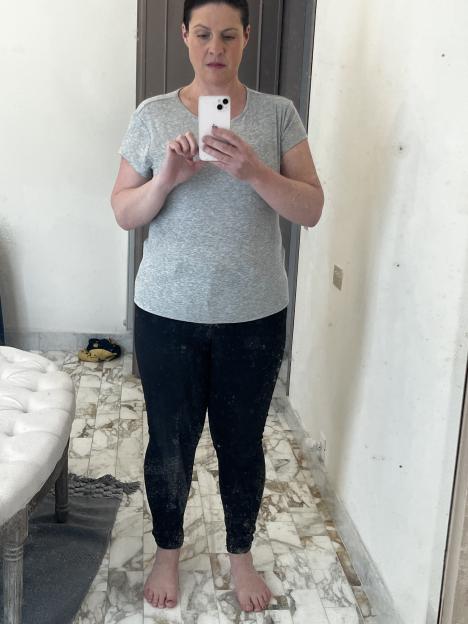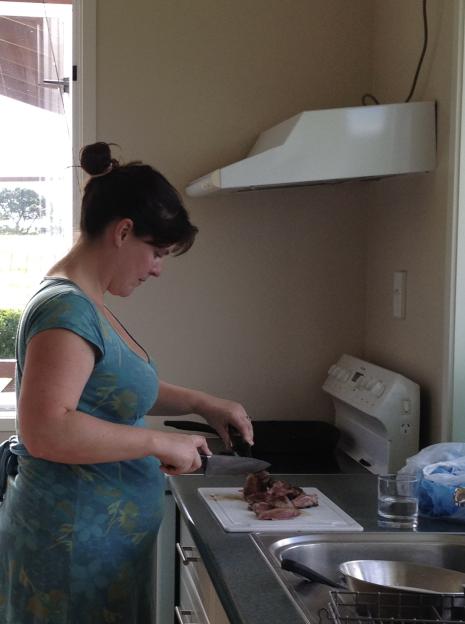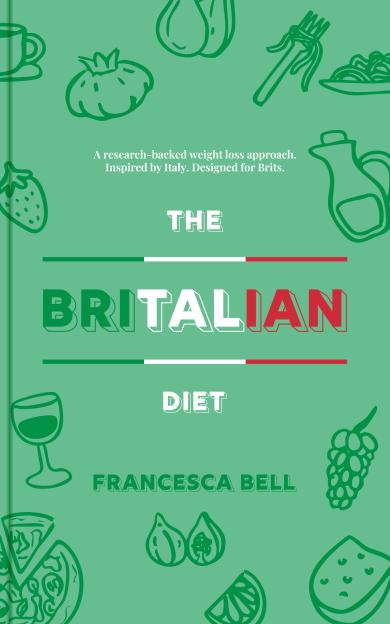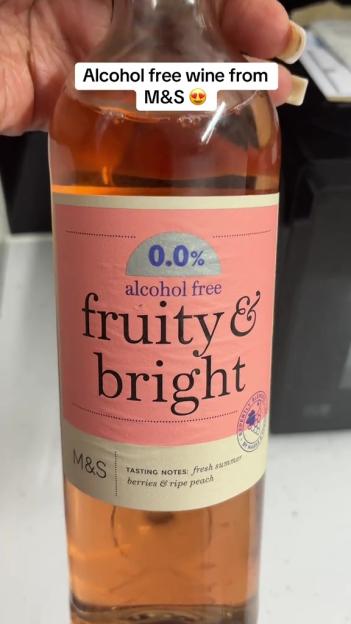MARKETING manager Fran Bell was at rock bottom about her figure when she booked a holiday to Italy in April last year.
The mum of two from Bakewell, Derbys, had piled on weight – she was 14st 9lb, and size 18.
 Fran Bell piled on the weight, hitting size 18 and weighing 14st 9lb
Fran Bell piled on the weight, hitting size 18 and weighing 14st 9lb
 But following the diet of an Italian, Fran lost a staggering six stone
But following the diet of an Italian, Fran lost a staggering six stone
But during her travels, the 42-year-old realised that obese Brits are “eating all wrong” – and found the secret to weight loss was an Italian diet.
Having since lost six stone and shrunk to a size eight with her new habits, Fran, married to graphic designer Nick, 40, has now created her own eating plan – The Britalian Diet.
Here she tells her story to Nikki Watkins . .
LOOKING back at pictures of myself as a slim size 10 newly wed, aged 30, I could never imagine that I would one day hit 14st 9lb, with a body mass index that made me morbidly obese.
But exhaustion from building a career and then looking after my two boys, who are now seven and five, saw me pile on a staggering six stone as I found myself too exhausted to cook and instead tucked into ultra-processed food and late-night snacks.
But I have now reset my eating habits. I feel like I’ve discovered a precious secret.
I am certain it is not trendy fat jabs, like Ozempic and Mounjaro , that will keep Brits slim and healthy, but simply eating like an Italian.
My weight had been piling on steadily over a decade and hit an all-time high when I went on a family holiday to Tuscany.
The holiday, which was an overdue 40th birthday treat, was planned to be everything I’d dreamed of about Italy — beautiful wine, sandy beaches and lazy lunches.
I wanted to make sure we had some nice family photos there, so I organised for a local photographer to snap some pictures.
I’d planned to lose weight before the holiday, but I didn’t manage to shed any.
The holiday was dreamy and I was excited to get the photos emailed over.
But when I looked at them back in England, I was so disappointed in how I looked.
Being a size 18, at 5ft 4in, I didn’t look healthy, and these snaps became my catalyst to do something for myself.
I chucked the photo memory stick to the very back of a drawer and decided to change my diet from scratch.
I started thinking about the Italians and how as a country they’re one of the healthiest in the world.
They have one of the lowest rates of obesity in Europe at 12 per cent, while in the UK it is 28 per cent.
I fell down a rabbit hole of research and, after talking to a few Italian friends and browsing forums, I discovered as much as I could about Italian diets.
I found they don’t eat as many ultra-processed foods as we do in the UK.
We get 57 per cent of our daily calories from UPFs, whereas Italians get just ten per cent.
The number of fast-food restaurants is also significantly less than in the UK.
Instead of rushing through a meal, like I did after getting the kids to bed, Italians sit down and they celebrate their meals.
Italians won’t drink milky coffees after 11am and they generally eat quite a sweet breakfast.
 Fran is married to Colin, 40, a graphic designer
Fran is married to Colin, 40, a graphic designer
A 2020 study published in the Obesity Review journal showed eating a sweet breakfast actually reduces the desire for sugar afterwards and Research from Pennsylvania State University shows if you have a soup before the main meal, like Italians do, it reduces the number of calories that you take in from the main event by 20 per cent, as you’ve satisfied your appetite a bit.
On the whole, they have proper meals with a dessert and starter at dinner and they are not snacking.
I started keeping a blog in May 2024 about how I was transforming my diet to the Italian way and what I’d learned.
I no longer started the day with two slices of buttered white toast, or had loads of milky instant coffees, sandwiches with crisps for lunch, a dinner of a massive chicken burger with chips and a big dessert like sticky toffee pudding and custard.
Instead, I went for classic Italian meals like meatballs with salad, baked fish or pasta.
Pasta is often thought of as “unhealthy” by those trying to lose weight, but in Italy they use a lot less meat in pasta dishes, and they are lighter on the sauce.
How ultra processed is YOUR kitchen?
Ultra processed foods (UPFs) were defined by Brazilian researchers who made the NOVA classification system. It breaks foods into groups depending on how processed they are. The most natural foods are in group 1, while the most processed are in group 4.
The groups do not entirely indicate how healthy a food is. However, it does indicate how processed it is – and studies have linked UPFs to a number of diseases.
How does your kitchen compare to the following groups?
Unprocessed or minimally processed foods (group 1)
- vegetables and fruits (fresh or frozen)
- dried fruits with no added sugar, honey, or oil
- grains and legumes (chickpeas, lentils)
- meat, poultry, fish, seafood, eggs
- milk without added sugar
- plain yogurt with no added sugar
- nuts and seeds
- spices and herbs
- tea, coffee, water
Processed culinary ingredients (group 2)
- iodized salt
- salted butter
- sugar and molasses from cane or beet
- honey extracted from combs
- syrup from maple trees
- vegetable oils crushed from olives or seeds
- butter and lard from milk and pork
- starches extracted from corn and other plants
- vegetable oils with added anti-oxidants
- vinegar with added preservatives
Processed foods (group 3)
- canned vegetables, fruits, and legumes
- fruits in syrup
- salted or sugared nuts and seeds
- salted cured or smoked meats
- canned fish
- artisanal breads and cheese
Ultra-processed foods (group 4)
- pop and fruit drinks
- sweetened yogurt
- sweet or savoury packaged snacks (e.g., cookies)
- candies and cake mixes
- mass-produced packaged breads and buns
- margarines and spreads
- breakfast cereals
- cereal and energy bars
- energy drinks
- instant soups, sauces, and noodles
- poultry and fish nuggets, hot dogs
- many ready-to-heat products: pre-prepared pies, pasta, and pizza dishes
Their Bolognese is much healthier than the traditional British spag bol, where you have a mountain of beef and cheese.
Every day I would log what I was eating and note why it was slimming.
I started putting together a plan and called it The Britalian Diet.
It was easy for me to follow in the UK, using only ingredients that could be picked up at the supermarket, not from a little village in Sicily.
I turned the blog into a website, which was getting a couple of thousand hits a month.
After three months, I had lost 8lb and then about 4lb would come off every month. After seeing the results in my own figure, I decided to self-publish the diet and facts as the book The Britalian Diet (£13, Amazon).
TRANSFORMED DIET
I’ve adopted this Italian diet now for 16 months, I’ve lost six stone, and am maintaining my weight. I’d tried other diets in the past but this is the only time I’ve seen consistent results.
It makes me really sad that people here are resorting to trendy weight-loss jabs, with an estimated 1.5million users.
The problem I’m seeing with injections is people are then losing their appetite and not knowing how to nourish themselves.
There isn’t much guidance around what you should be eating when on them, so people are sat there with a Burger King meal and a milkshake, only managing a couple of bites.
I cannot see these jabs fixing Britain’s obesity crisis.
 Fran. pictured before her incredible weight loss, started keeping a blog in May 2024 on how she was transforming her diet to the Italian way
Fran. pictured before her incredible weight loss, started keeping a blog in May 2024 on how she was transforming her diet to the Italian way
 I couldn’t completely commit to a diet if I have to give up a glass of wine on a Friday night or pudding, says Fran
I couldn’t completely commit to a diet if I have to give up a glass of wine on a Friday night or pudding, says Fran
 The Britalian Diet (£13, Amazon)
The Britalian Diet (£13, Amazon)
I feel like it’s just a sticking plaster and we’re storing up health issues for later.
We should be having proper meals, no snacking, eating more mindfully and not eating diet foods.
I’ve seen improvement in my fitness, too. I live in the Peak District and keep fit with hill walking.
There has even been a boost in my romantic life. My husband says he has found me attractive at every size, and I believe him.
But now, when I’m in a new outfit with my new-found confidence, I can see a little glint in his eye and can tell he appreciates the effort I’ve put in.
A DAY IN THE LIFE OF A BRITALIAN
Breakfast: One small croissant and a teaspoon of jam, with Cappuccino or other milky coffee
Lunch: Tuna Bean Salad, Calories per portion: 451
Afternoon Snack: Tomato & mozzarella crostini with basil. Calories per portion: 220
Dinner starter: Green salad with a lemon and parsley dressing.
Dinner main course: Traditional Italian Bolognese. Calories per portion: 313
Dessert: Lemon Ricotta Mousse, calories per portion: 83
DINNER MAIN COURSE – Traditional Italian Bolognese (Serves 6)
Cooking and prep time: 1 hour 30 hours (could also be cooked in a slow cooker)
- 2 tbsp olive oil
- 1 garlic clove
- 1 small carrot, finely chopped
- 1 celery stick, finely chopped
- 1/2 onion, finely chopped
- 50g prosciutto, finely chopped
- 200g minced pork
- 400ml passata or one tin of chopped tomatoes
- pinch of grated nutmeg
- 200g dry tagliatelle or spaghetti
- 25g Parmesan cheese, grated
1. Heat the oil in a large frying pan. Add garlic and cook over a low heat for a few minutes until golden brown. Remove from the pan.
2. Add carrot, celery, onion and prosciutto. Cook over low heat for eight to 10 minutes until lightly browned.
3. Add passata and nutmeg, season, lower the heat, cover and simmer for an hour or until the sauce is nice and thick.
4 Cook the pasta in salted boiling water for nine minutes , or according to the instructions on the pack. Drain, pour the sauce over and serve with grated Parmesan on top.
AFTERNOON SNACK – TOMATO AND MOZZARELLA CROSTINI (Serves one)
Cooking and prep time: 10 minutes
- 45g slice of baguette
- 1 medium tomato, diced
- 1 tsp olive oil
- 1 small garlic clove, minced
- 1 tbsp grated Parmesan cheese
- Fresh basil
- Salt and pepper, to taste
1. Toast the slice of white baguette until golden and crispy. You can do this in a toaster, oven or on a grill pan.
2. While the bread is toasting, heat the olive oil in a small pan over low heat. Add the minced garlic and sauté for about 30 seconds until fragrant.
3. Once the bread is toasted, rub it lightly with the sautéed garlic for an added aromatic flavour Then, spoon the diced tomato on top of the crostini.
4. Add a generous sprinkle of Parmesan cheese over the tomatoes.
5. Sprinkle a pinch of salt and pepper, and garnish with fresh basil leaves.







